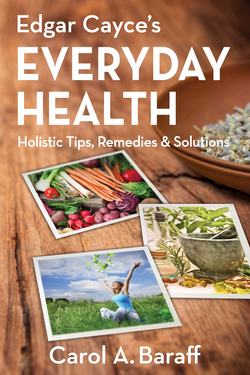Читать книгу Edgar Cayce's Everyday Health - Carol Ann Baraff - Страница 8
На сайте Литреса книга снята с продажи.
Olive Oil for Life!
ОглавлениеWhen it comes to citing the many health benefits of this versatile oil, both inside and out, the Cayce readings have plenty of company. In fact, of all the edible oils, olive oil seems to be the one that inspires the most agreement. New and time-honored uses abound in the kitchen, the massage room, and the personal care arena.
As a staple in Mediterranean diets, the venerable olive, along with the oil that is pressed from it, has a long history of use. Recently, some extremely encouraging studies linking olive oil consumption with certain health trends have emerged from that part of the world. Daily intake of this largely monounsaturated fat is now thought to play a major role in heart health by reducing both blood pressure and cholesterol.
The high value placed by the Cayce readings on olive oil is implicit in the literally thousands of times it was mentioned. Besides being the favored oil in salad dressings, it is often recommended to be taken internally as a mild elimination aid and “food” for the intestinal system. Regarded as beneficial for anyone, its purpose is to soothe and protect the intestinal wall.
Those who can tolerate, or enjoy, this oil’s distinctive flavor should know that many readings advise taking it in larger amounts as a part of systematic cleanses, such as the apple diet and castor oil packs. In the doses recommended, which range from approximately two to six tablespoons, olive oil tends to purge the gall bladder, sometimes in a rather dramatic fashion. In the process, the liver, as the source of the bile that is stored and excreted by the gall bladder, is aided in its difficult detoxifying work.
Similar uses and doses are found in the recommendations of present day health advocates. In the finely tuned protocol of Dr. Richard Schulze, for example, olive oil is part of a blended daily drink that also includes freshly pressed juice, raw garlic cloves, and ginger. In the course of a five-day cleanse, the oil is gradually increased from one tablespoon to five.4
“Food as medicine” uses for olive oil may at times go far beyond internal cleansing. For instance, some cancer researchers believe that it functions as a powerful disease preventive. Olive oil’s protective effect is linked to its antioxidant properties and unique fatty acid content.5
Cayce’s external recommendations are found in a huge variety of complexion, massage, and skin care preparations. One reading goes so far as to state that “. . . olive oil—properly prepared (hence pure olive oil should always be used)—is one of the most effective agents for stimulating muscular activity, or mucus-membrane activity, that may be applied to a body.” (440-3) In the case of a woman with weakness and toxemia, nightly massages with olive oil were advised “. . . to relax and strengthen and feed the muscular conditions, and to bring about the better locomotion from the effects of the poisons as are being eliminated from the system, and to strengthen the body throughout.” (5421-6)
Besides being recommended alone, olive oil is included in an assortment of massage formulas, such as an often-mentioned pairing with equal parts tincture of myrrh: “The myrrh, as an activative force with the oil, acts as a healing influence to the tendency of inflammation or drying of the texture or tendril effect of muscular activities of the system.” (372-8) In this case the two ingredients are combined just before use to avoid spoilage, though this is not an issue with combinations of oils. Because of its gentleness, olive oil is also a natural in hair and body wash products such as “castile” soaps and shampoos.
The emergence of new and healthful uses for the timeless olive should come as no surprise. It seems fitting that there should be such a strong similarity between the words “olive” and “alive.”
